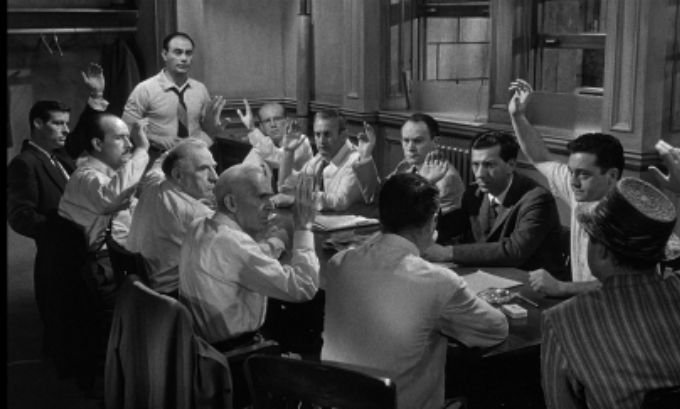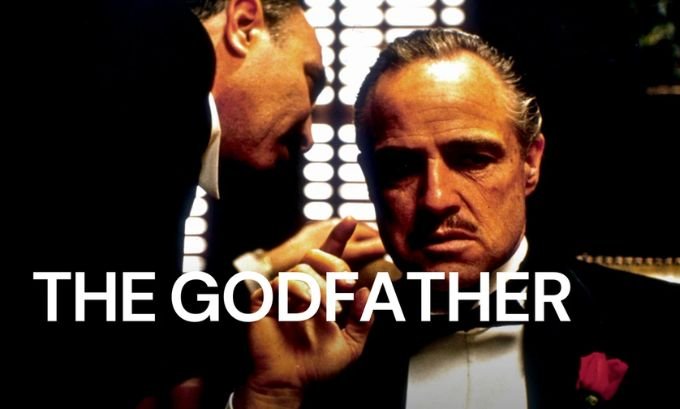Cinema has the unique power to transport us across time, cultures, and emotions. From silent-era masterpieces to modern blockbusters, certain films transcend their original context to become timeless works of art. This comprehensive guide explores the top 100 movies that have shaped global cinema, selected based on critical acclaim, cultural impact, box office success, and enduring influence on filmmaking.
Our journey spans nearly a century of storytelling, encompassing everything from Italian neorealism to Korean thrillers, from intimate character studies to epic adventures. These films don’t just entertain—they define entire cinematic movements, inspire generations of filmmakers, and bridge cultural divides through the universal language of storytelling.
The Golden Foundations: Classics from 1920s-1950s
The early decades of cinema established many of the storytelling techniques we still use today. Metropolis (1927) pioneered science fiction cinema with its stunning visual effects and dystopian themes that remain relevant nearly a century later. Fritz Lang’s masterpiece set the template for countless sci-fi films that followed.
Citizen Kane (1941) revolutionized narrative structure with its innovative use of flashbacks, deep-focus photography, and complex character development. Orson Welles’ debut as director created techniques that film schools still teach today.
The romance genre found its perfect expression in Casablanca (1942), where Humphrey Bogart and Ingrid Bergman created chemistry that has never been replicated. Its memorable quotes and timeless themes of love and sacrifice during wartime cement its place among cinema’s greatest achievements.
Italian neorealism emerged with Bicycle Thieves (1948), showing how ordinary people’s struggles could create extraordinary cinema. Vittorio De Sica’s masterpiece influenced filmmakers worldwide with its authentic portrayal of post-war poverty.
The courtroom drama reached its pinnacle with 12 Angry Men (1957). Sidney Lumet’s tense examination of justice and prejudice proved that compelling cinema could unfold entirely in a single room, relying purely on character development and dialogue.

The Revolutionary Era: 1960s-1970s
This period saw cinema expand its scope and ambition. Lawrence of Arabia (1962) demonstrated the power of epic filmmaking, with David Lean’s sweeping desert landscapes and Maurice Jarre’s iconic score creating an immersive experience that demands to be seen on the biggest screen possible.
Sergio Leone redefined the Western genre with The Good, the Bad and the Ugly (1966). Clint Eastwood’s Man with No Name became an icon, while Ennio Morricone’s score elevated every scene. The film’s operatic style influenced action cinema for decades.
Stanley Kubrick pushed the boundaries of science fiction with 2001: A Space Odyssey (1968). Its groundbreaking special effects, philosophical themes, and HAL 9000’s chilling presence created a template for intelligent sci-fi that filmmakers still aspire to match.
The Godfather (1972) transformed the crime genre by treating it as family saga. Francis Ford Coppola’s epic examination of power, loyalty, and corruption became a cultural touchstone that extends far beyond cinema.
The decade concluded with Apocalypse Now (1979), Coppola’s haunting meditation on the Vietnam War. Its production was nearly as legendary as the finished film, with the documentary “Hearts of Darkness” revealing the chaos behind this masterpiece.
Modern Storytelling: 1980s-1990s
The 1980s brought new visual sophistication and character depth. Martin Scorsese’s Raging Bull (1980) showcased Robert De Niro’s transformative performance while exploring masculinity and self-destruction through stunning black-and-white cinematography.
Amadeus (1984) brought classical music to mainstream audiences through Milos Forman’s vibrant biographical drama. The film’s portrayal of Mozart’s genius and Salieri’s jealousy created one of cinema’s most compelling character studies.
Giuseppe Tornatore’s Cinema Paradiso (1988) celebrated the magic of movies themselves. This nostalgic coming-of-age story resonated with audiences worldwide, winning the Academy Award for Best Foreign Language Film.
The 1990s delivered some of cinema’s most beloved films. Schindler’s List (1993) demonstrated Steven Spielberg’s ability to handle serious historical subjects with sensitivity and power. The film’s black-and-white cinematography, punctuated by moments of color, created an unforgettable visual language.
The Shawshank Redemption (1994) initially struggled at the box office but found new life on home video and television. Its themes of hope and friendship have made it a perennial favorite that consistently ranks at the top of movie polls.
David Fincher’s Fight Club (1999) became a cultural phenomenon that sparked countless discussions about masculinity, consumerism, and identity. Its twist ending and quotable dialogue made it an instant cult classic.
Contemporary Masterpieces: 2000s-2020s
The new millennium brought technological advances and global perspectives to cinema. Peter Jackson’s The Lord of the Rings trilogy (2001-2003) proved that fantasy epics could achieve both critical acclaim and commercial success. The films’ practical effects, emotional storytelling, and Howard Shore’s magnificent score created a new standard for blockbuster filmmaking.
City of God (2002) introduced international audiences to Brazilian cinema through its kinetic portrayal of Rio de Janeiro’s favelas. The film’s innovative cinematography and non-professional actors created an authentic and powerful crime drama.
Japanese animation reached new heights with Spirited Away (2001). Hayao Miyazaki’s imaginative tale became the first anime to win the Academy Award for Best Animated Feature, proving that animation could tell sophisticated stories for all ages.
Christopher Nolan’s The Dark Knight (2008) elevated the superhero genre through complex themes, practical effects, and Heath Ledger’s legendary performance as the Joker. The film proved that comic book adaptations could be both entertaining and artistically significant.
Bong Joon-ho’s Parasite (2019) made history as the first non-English film to win Best Picture at the Academy Awards. Its sharp social commentary wrapped in thriller elements demonstrated cinema’s power to address universal themes through specific cultural contexts.
Everything Everywhere All at Once (2022) pushed the boundaries of what cinema can achieve, blending genres, visual effects, and philosophical themes into a unique experience that celebrated the medium’s infinite possibilities.

Genre Excellence
Each film genre has its defining masterpieces. In drama and crime, The Godfather saga remains unmatched, while Martin Scorsese’s Goodfellas brought kinetic energy to the mob movie. The Departed showcased complex moral ambiguities, and Joker proved that character studies could achieve blockbuster success.
Adventure and fantasy found their ultimate expression in Jackson’s Lord of the Rings trilogy, while Harry Potter created a magical world that captivated multiple generations. Guillermo del Toro’s Pan’s Labyrinth demonstrated how fantasy could address serious historical themes.
War films reached their peak with Saving Private Ryan, whose D-Day sequence set new standards for battle cinematography. Christopher Nolan’s Dunkirk proved that war stories could be told through innovative narrative structures.
Romance found perfect expression in Titanic, which combined epic disaster filmmaking with intimate love story. La La Land revitalized the movie musical for contemporary audiences.
Animation evolved from simple entertainment to sophisticated art form through Toy Story‘s computer-generated innovation, Spirited Away‘s imaginative storytelling, and Coco‘s cultural celebration.
International Cinema’s Global Impact
World cinema has enriched the medium through diverse perspectives and storytelling traditions. Indian cinema contributed Lagaan‘s epic sports drama, while Satyajit Ray’s Pather Panchali established the Apu trilogy as essential viewing.
Japanese cinema gave us Akira Kurosawa’s Seven Samurai, which influenced countless action films, including The Magnificent Seven and Star Wars.
Italian directors created movements that influenced filmmaking worldwide. Beyond the neorealist classics, Giuseppe Tornatore’s Cinema Paradiso became a love letter to movies themselves.
French cinema’s New Wave movement produced The 400 Blows and later delighted audiences with Amélie‘s whimsical romanticism.
Korean cinema emerged as a global force with Oldboy‘s visceral storytelling and Parasite‘s social commentary, proving that compelling stories transcend language barriers.
Brazilian cinema’s City of God demonstrated how local stories could achieve universal impact through powerful filmmaking techniques.
Cinema’s Lasting Legacy
These top 100 best films represent more than entertainment—they define cinematic eras, inspire new generations of filmmakers, and bridge cultural divides through universal human experiences. From Metropolis‘s early sci-fi vision to Everything Everywhere All at Once‘s multiverse madness, each movie captures something essential about the human experience while pushing the medium forward.
The greatest films endure because they combine technical excellence with emotional truth. They don’t just reflect their times—they help shape how we understand ourselves and our world. Whether through Citizen Kane‘s narrative innovation, The Godfather‘s character complexity, or Parasite‘s social insight, these movies continue influencing how stories are told on screen.
Cinema remains humanity’s most collaborative art form, bringing together writers, directors, actors, cinematographers, composers, and countless other artists to create shared dreams. These 100 films represent the medium at its finest—timeless achievements that remind us why movies matter and continue inspiring new ways of seeing the world through the magic of cinema.


